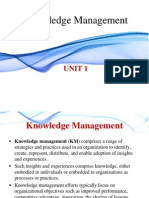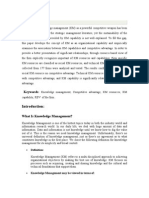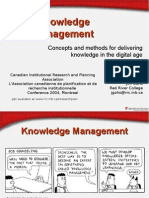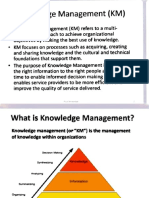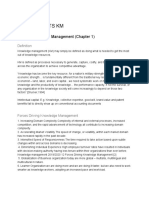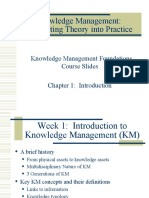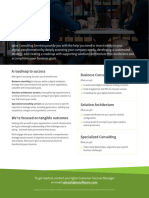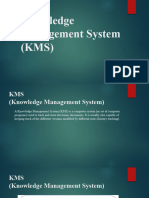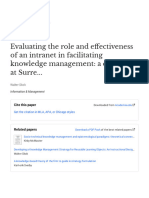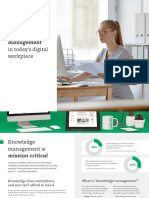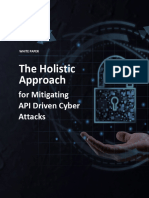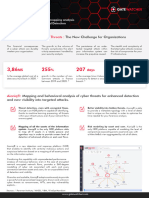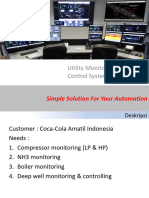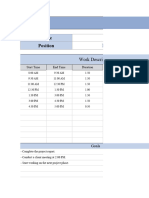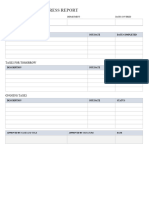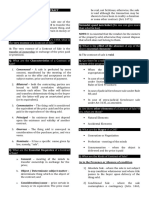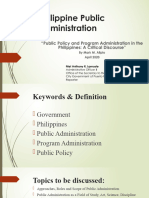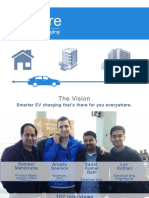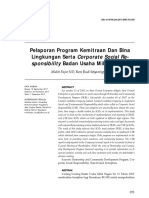0% found this document useful (0 votes)
44 views7 pagesKnowledge Management Trends 2023
The document discusses the growing importance and market size of knowledge management for companies. It outlines four key applications of knowledge management:
1) Acquiring knowledge by capturing and indexing information from past projects
2) Sharing knowledge by publishing expertise and best practices
3) Using knowledge to make decisions by learning from others' experiences
4) Developing knowledge to improve skills and get promoted
The document contrasts old content-centered approaches with new integrated and human-centered solutions that better address the four applications, especially by surfacing unconscious knowledge.
Uploaded by
andini eldanantyCopyright
© © All Rights Reserved
We take content rights seriously. If you suspect this is your content, claim it here.
Available Formats
Download as PDF, TXT or read online on Scribd
0% found this document useful (0 votes)
44 views7 pagesKnowledge Management Trends 2023
The document discusses the growing importance and market size of knowledge management for companies. It outlines four key applications of knowledge management:
1) Acquiring knowledge by capturing and indexing information from past projects
2) Sharing knowledge by publishing expertise and best practices
3) Using knowledge to make decisions by learning from others' experiences
4) Developing knowledge to improve skills and get promoted
The document contrasts old content-centered approaches with new integrated and human-centered solutions that better address the four applications, especially by surfacing unconscious knowledge.
Uploaded by
andini eldanantyCopyright
© © All Rights Reserved
We take content rights seriously. If you suspect this is your content, claim it here.
Available Formats
Download as PDF, TXT or read online on Scribd
/ 7

